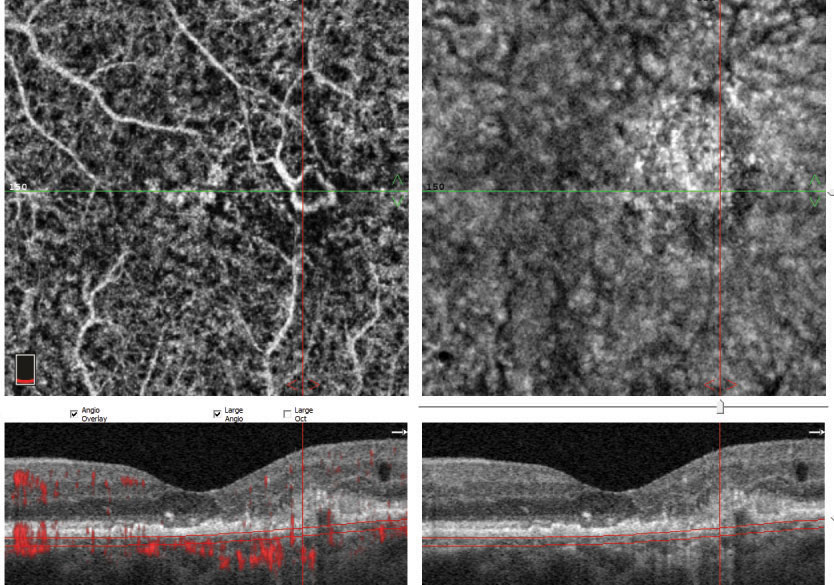 |
OCT-A can be a useful tool in detection of inflammatory CNV. Photo: Steven Ferrucci, OD, and Jay M. Haynie, OD. Click image to enlarge. |
In an effort to investigate the role OCT angiography (OCT-A) plays in inflammatory choroidal neovascularization (CNV), researchers recently found this modality is effective in detecting the condition and could provide detailed visualization regarding location, morphologic structure and flow, as well as help pinpoint response to therapy.
This retrospective review included 13 eyes of 12 patients with a diagnosis of uveitis and associated inflammatory CNV with active exudation. Spectral domain OCT-A of the outer retina to the choriocapillaris was evaluated for the presence of inflammatory CNV. Active inflammatory CNV was determined by spectral domain OCT and/or fluorescein angiogram. Follow-up OCT-A images were qualitatively assessed to determine if regression of inflammatory CNV occurred following treatment.
The etiologies of uveitis included punctate inner choroidopathy (30%), multifocal choroiditis (15%), presumed sarcoid uveitis (15%), tuberculous choroiditis (8%), birdshot chorioretinopathy (8%), syphilitic uveitis (8%), serpiginous choroiditis (8%) and idiopathic panuveitis (8%). Inflammatory CNV was detected on en face OCT-A in 77% of eyes. Following inflammatory CNV treatment, en face OCT-A demonstrated complete regression of inflammatory CNV in 50%, partial regression in 20% and no regression in 30% of eyes.
“We demonstrated that OCT-A is a useful diagnostic tool for the identification of active inflammatory CNV secondary to different uveitic entities,” the study authors wrote in their paper. “Aside from providing detailed morphologic structures of inflammatory CNV, OCT-A may also be used as an adjunctive tool to monitor treatment response of inflammatory CNV, particularly in cases of borderline OCT findings.”
The team cautioned, however, that OCT-A imaging has certain limitations that could affect the visualization of inflammatory CNV, suggesting that OCT-A be used in combination with multimodal imaging.
Kongwattananon W, Grasic D, Lin H, et al. The role of optical coherence tomography angiography in detecting and monitoring inflammatory choroidal neovascularization. Retina. January 20, 2022. [Epub ahead of print]. |


